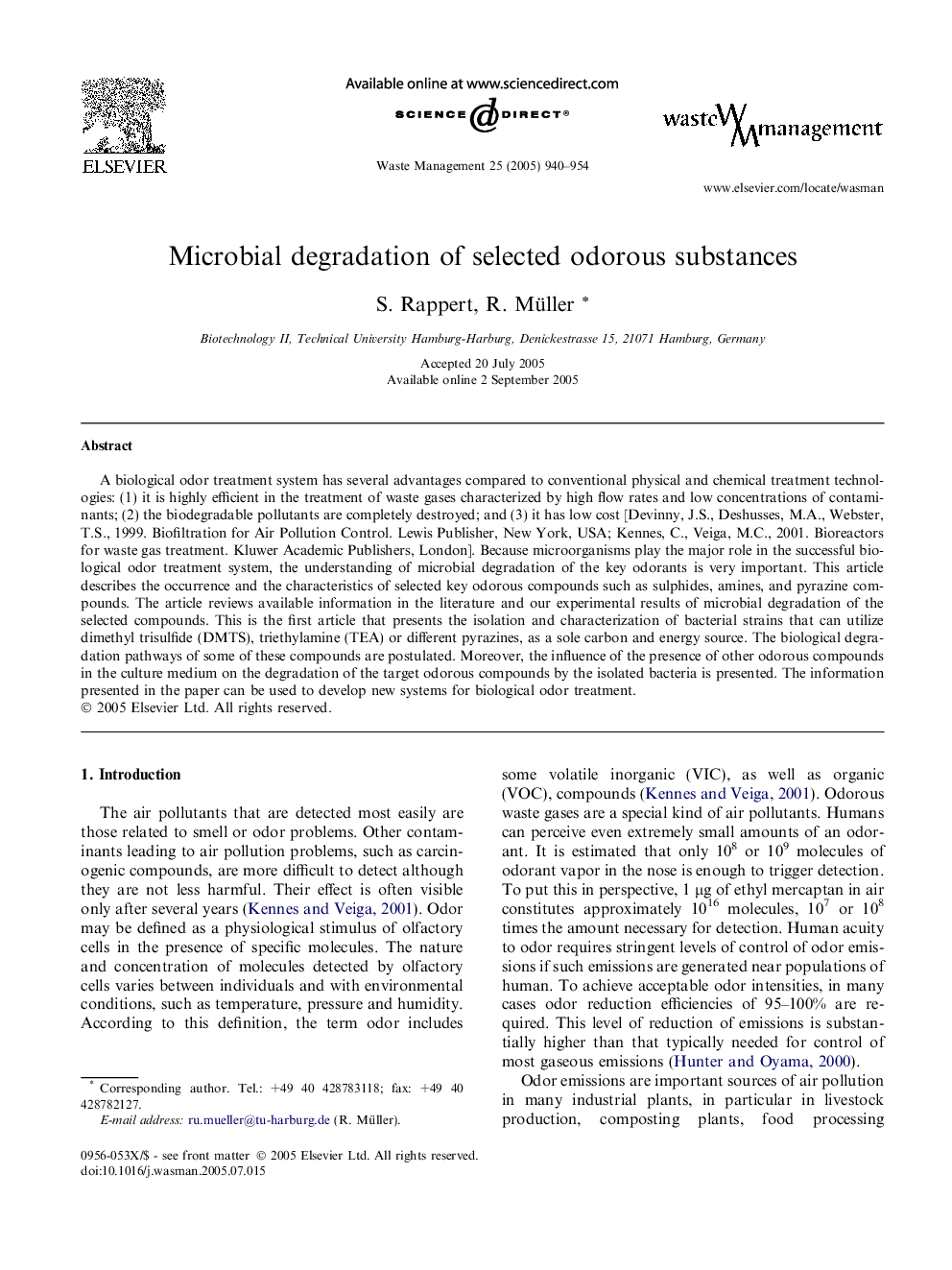| Article ID | Journal | Published Year | Pages | File Type |
|---|---|---|---|---|
| 9465399 | Waste Management | 2005 | 15 Pages |
Abstract
A biological odor treatment system has several advantages compared to conventional physical and chemical treatment technologies: (1) it is highly efficient in the treatment of waste gases characterized by high flow rates and low concentrations of contaminants; (2) the biodegradable pollutants are completely destroyed; and (3) it has low cost [Devinny, J.S., Deshusses, M.A., Webster, T.S., 1999. Biofiltration for Air Pollution Control. Lewis Publisher, New York, USA; Kennes, C., Veiga, M.C., 2001. Bioreactors for waste gas treatment. Kluwer Academic Publishers, London]. Because microorganisms play the major role in the successful biological odor treatment system, the understanding of microbial degradation of the key odorants is very important. This article describes the occurrence and the characteristics of selected key odorous compounds such as sulphides, amines, and pyrazine compounds. The article reviews available information in the literature and our experimental results of microbial degradation of the selected compounds. This is the first article that presents the isolation and characterization of bacterial strains that can utilize dimethyl trisulfide (DMTS), triethylamine (TEA) or different pyrazines, as a sole carbon and energy source. The biological degradation pathways of some of these compounds are postulated. Moreover, the influence of the presence of other odorous compounds in the culture medium on the degradation of the target odorous compounds by the isolated bacteria is presented. The information presented in the paper can be used to develop new systems for biological odor treatment.
Related Topics
Physical Sciences and Engineering
Earth and Planetary Sciences
Geotechnical Engineering and Engineering Geology
Authors
S. Rappert, R. Müller,
